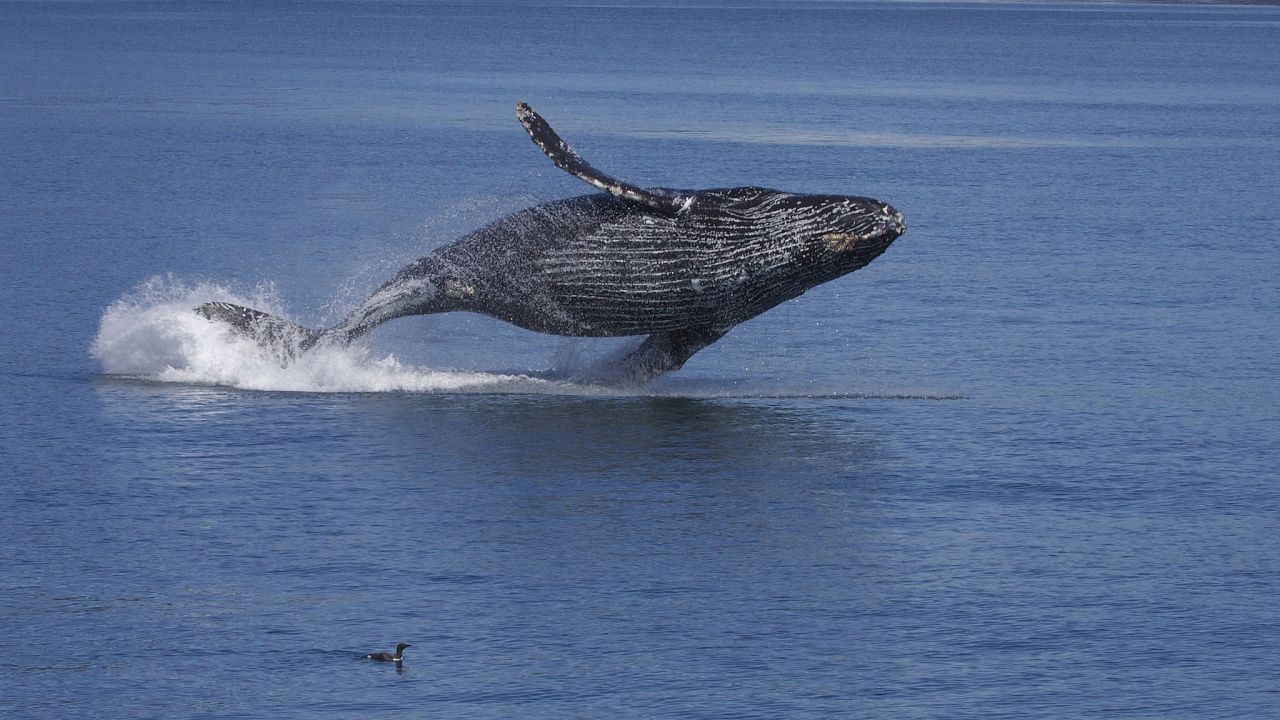
The National Oceanic and Atmosphere Administration’s fisheries division has sidelined a rule designed to safeguard marine mammals like humpback whales. (Photo by Gregory "Slobirdr" Smith/ flickr CC 2.0)
It was no secret that the Trump administration was probably not going to be the kind of place that embraced whales, but rule changes that affect endangered species are coming fast from all sides. As Dominique Mosbergen reports in HuffPost, last week the Fish and Wildlife Service took the sage grouse off the endangered list, to the applause of developers and oil interests in the West. This week, The National Oceanic and Atmospheric Administration’s fisheries division sidelined a pending rule designed to safeguard marine mammals and sea turtles. The rule regulated the use of swordfishing gill nets along the West Coast.
Environmental experts are calling the move a declaration of “war” by the Trump administration against threatened marine life.
“The Trump administration has declared war on whales, dolphins and turtles off the coast of California,” Todd Steiner, director of the California-based Turtle Island Restoration Network, told the Los Angeles Times. “This determination will only lead to more potential litigation and legislation involving this fishery. It’s not a good sign.”
Proposed in 2015 by the Pacific Fishery Management Council, which includes representatives from the fishing industry, tribal representatives, federal and state officials and other conservation experts, the gill-net rule sought to impose a cap on the number of marine mammals and turtles that could be killed or injured by the long, near-invisible gill nets used to catch swordfish. Some of the animals covered by the rule are endangered fin, humpback and sperm whales, common bottlenose dolphins and endangered leatherback and loggerhead sea turtles.
Under the proposed regulation, gill-net fishing for swordfish would have been banned for up to two years if too many marine mammals and turtles were caught in the nets as by-catch.
According to The Associated Press, the rule would have applied to 20 fishing vessels or fewer operating off the coast of California. But the rule could have had a profound effect on sea life.
Gill-net fishing poses a grave threat to marine mammals and other creatures. Citing NOAA data, the nonprofit Center for Biological Diversity said last year that the California-based gill-net fishery targeting swordfish “catches and discards more than 100 protected whales, dolphins, seals and sea lions each year, in addition to thousands of sharks and other fish.”
While the number of whales, sea turtles and dolphins killed in the swordfishing industries nets has declined significantly since earlier protections were put in place in the 1990s, the populations of some of these species are extremely low. One catch of a Pacific leatherback turtle is a big loss when you consider that there are only an estimated 2,300 females remaining in the world.
In an email to BillMoyers.com, NOAA fisheries said that it was wrong to characterize the rule rollback as politically motivated. NOAA fisheries spokesman Michael Milstein wrote: “This was not a political decision. It was based on science. Even the Marine Mammal Commission, the science panel that advises the government on protection of marine mammals, recommended that we NOT adopt the new regulations. They said, ‘Further, the Commission finds the proposed regulations to be inadequately justified, inconsistently applied, not based on the latest and best available data and science, and unlikely to achieve the stated goal.'”
NOAA says that protections put in place in the late 1990s have already greatly reduced the number of entanglements of the endangered species and that the new rules were not necessary. Milstein further notes that the decision was made after a normal review process including a period of public comment. Read more about the rules changes at the Los Angeles Times.
June 19, 2017: This post has been updated to include a statement from the National Oceanic and Atmospheric Administration.



